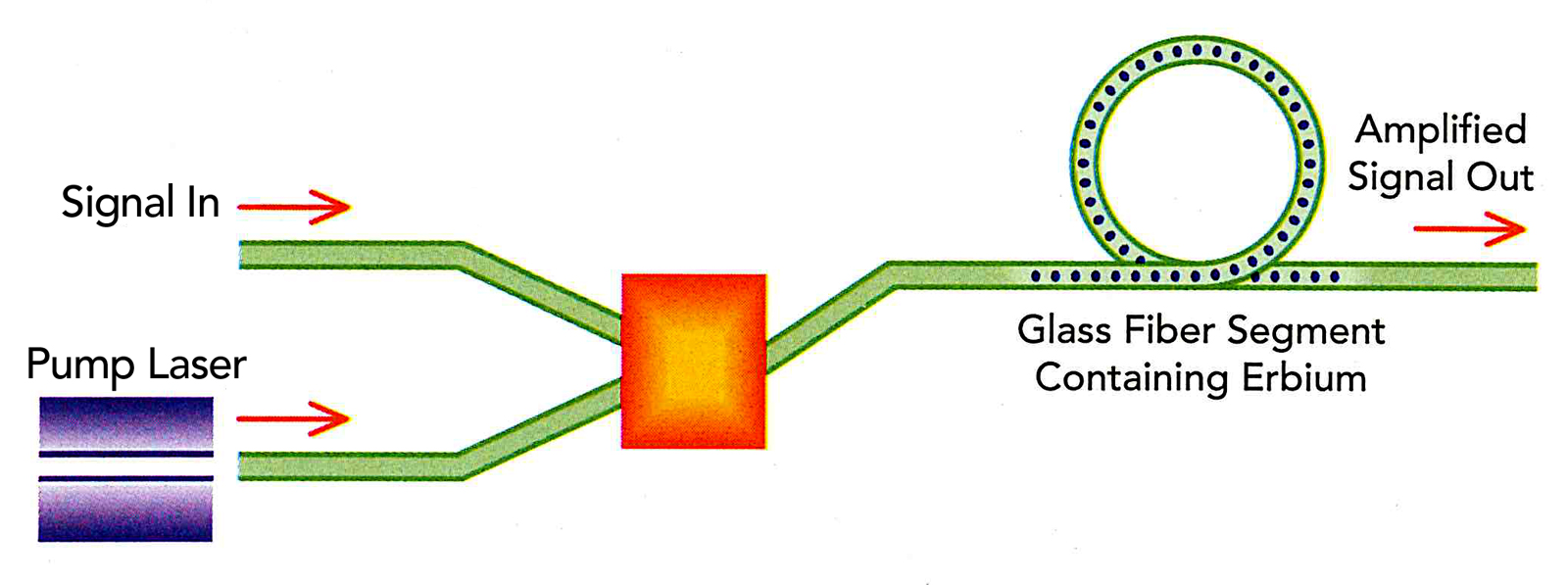Guide to Optical Amplifier
In pursuit of high transmission capacity, people have been tried many ways. For example, they pave more cables or use the TDM (time domain multiplexer) to improve the transmission capacity. But in these traditional ways, signals could become weaker in power through the fiber link. And the further they are transmitted, the weaker the signals will be until they can not be detected. With the advanced of technology, optical amplifier which is a better solution to improve the transmission capacity came around. It can strengthen the attenuated signals and even can bring them back to the original level. And now it is mainly applied in DWDM technology so that DWDM technology can support long-haul transmission.
Optical amplifier is a device that can amplifier optical signals directly, which does not need to convert optical signals to electric signals first. And we will take the common kind for example to explain its working principles, namely, EDFA (erbium doped fiber amplifier). Optical fiber is often doped with rare-earth elements, such as erbium or praseodymium which can be pumped into a excited state by pump laser. When input signals pass by the fiber, they will stimulate the excited atoms of erbium so that the atoms of erbium can release their energy in the form of emitted light photons. It is the emitted light photons who has the same phase and wavelength with input signals that amplify the optical signals.
Working Principles of EDFA
Optical amplifier can be divided into three types now. They are the doped fiber amplifier, the semiconductor optical amplifier and the Raman amplifier. Next we will introduce each of amplifiers.
Doped fiber amplifier has several types according to the kinds of rare earth elements. Erbium-doped fiber amplifier is the most common one. Just like we said before, its amplifying medium is the fiber doped with erbium elements. The amplified light’s wavelength is around 1550 nm, which suffers minimum attenuation. And this amplifier has low noise and is applied in the long-haul telecommunication networks. The second is semiconductor optical amplifier whose gain medium is undoped InGaAsP. Compared with EDFA, it is less expensive and more suitable for local networks. Raman amplifier’s gain medium is undoped optical fiber. It is made with Raman scattering effect which is an important non-linear effect. By the early part of 2000s, it is used for long-haul (typically between 300 and 800 km) or ultra-long-haul (typically longer than 800 km) fiber-optics transmission system. And this amplifier has been commercialized these days, with sold at a high price.
The advent of optical amplifier is a great success in optical fiber communication technology. At present, it has been become a basic device in modern telecommunication networks and brings much effectiveness to economy and society, which presents a good trend for the market prospect.
Originally published at http://www.chinacablesbuy.com/guide-to-optical-amplifier.html
Post Your Ad Here

Comments